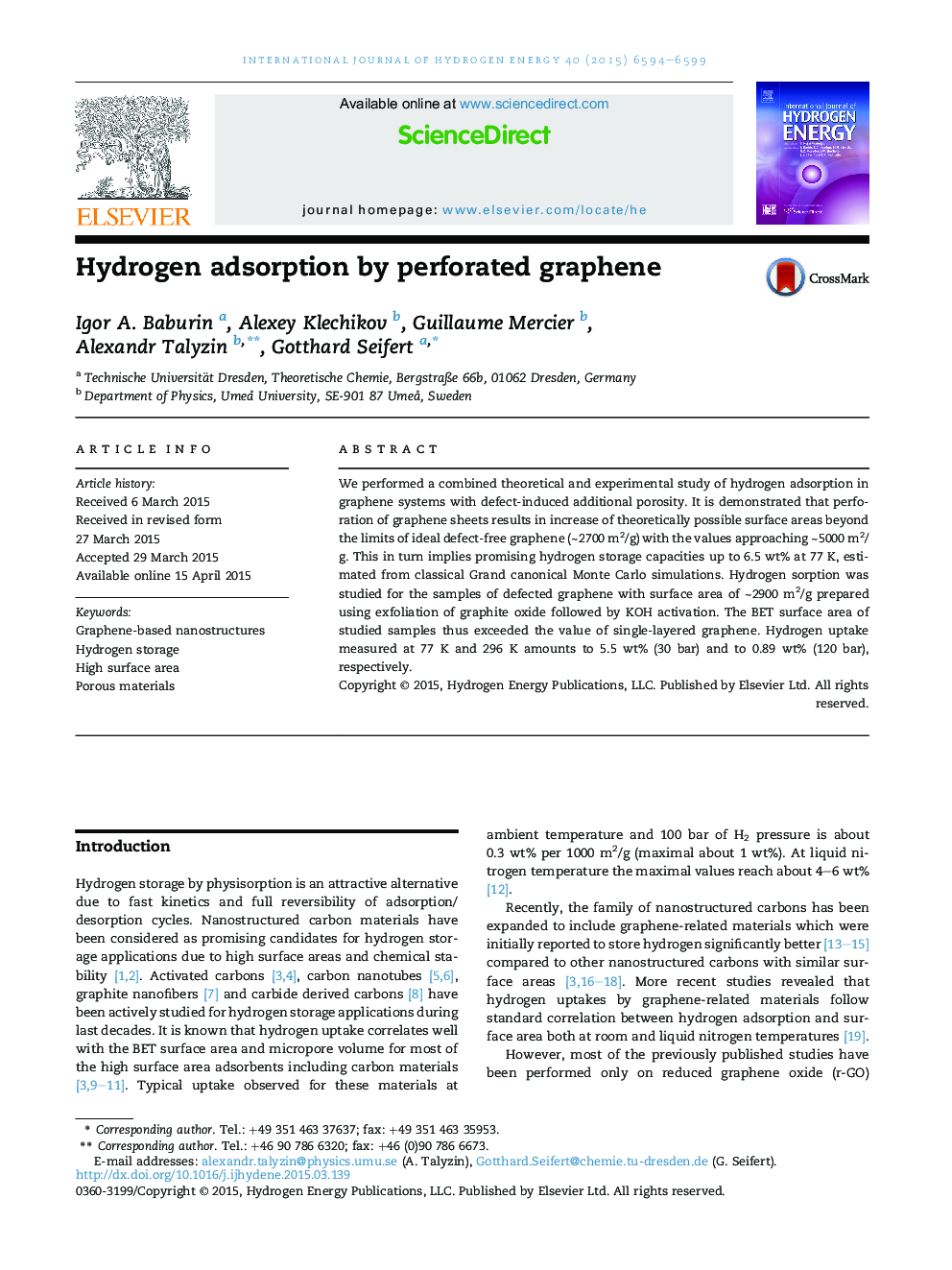| Article ID | Journal | Published Year | Pages | File Type |
|---|---|---|---|---|
| 1271455 | International Journal of Hydrogen Energy | 2015 | 6 Pages |
•Models of perforated graphene with surface areas up to 5000 m2/g were proposed.•Hydrogen uptake for model structures was calculated to be at most 6.5 wt% at 77 K.•The samples of perforated graphene with surface area of 2900 m2/g were synthesized.•Hydrogen uptake of perforated graphene was measured to be 5.5 wt% (77 K) and 0.89 wt% (296 K).
We performed a combined theoretical and experimental study of hydrogen adsorption in graphene systems with defect-induced additional porosity. It is demonstrated that perforation of graphene sheets results in increase of theoretically possible surface areas beyond the limits of ideal defect-free graphene (∼2700 m2/g) with the values approaching ∼5000 m2/g. This in turn implies promising hydrogen storage capacities up to 6.5 wt% at 77 K, estimated from classical Grand canonical Monte Carlo simulations. Hydrogen sorption was studied for the samples of defected graphene with surface area of ∼2900 m2/g prepared using exfoliation of graphite oxide followed by KOH activation. The BET surface area of studied samples thus exceeded the value of single-layered graphene. Hydrogen uptake measured at 77 K and 296 K amounts to 5.5 wt% (30 bar) and to 0.89 wt% (120 bar), respectively.
Graphical abstractFigure optionsDownload full-size imageDownload as PowerPoint slide
